FERNANDOA
Fernandoa
Welw. ex Seem., J. Bot. 4: 123. 1866; Gentry, Ann. Missouri Bot. Gard. 62: 480. 1975; Steenis, Blumea, 23, No. 1: 133. 1976; Fl. China @eFloras.org 18: 217; Fl. Pak. @ eFloras.org p.13; Haplophragma P. Dop, Bull. Soc. Bot. France 72: 89. 1976.
Medium-sized trees. Leaves large, 1-pinnately compound; leaflets 2-5(or 6) pairs, entire. Flowers large, bisexual, zygomorphic, pentamerous, hypogynous, in terminal or axillary panicles or cymose, pubescent. Calyx large, tubular or campanulate, usually 2-5-lobed, slightly irregular or regular, persistent, glandular. Corolla funnelform or campanulate, lobes 5, subrounded, sinuate or crenate. Stamens 4, didynamous; anthers bithecous, slightly divergent, included; staminodes small. Disc mostly annular. Ovary terete, glabrous or pubescent, 2-locular, ovules numerous in 2 rows. Capsule dehiscing loculicidally, 4-angular, valves thin, leathery; septum thick, smooth, vertical with fruiting valve. Seeds in 2 rows, numerous, nearly square, narrowly membranous winged at both ends.
15 species
Fernandoa adenophylla
Fernandoa adenophylla
(Wall. ex G. Don) V. Steenis, Blumea 23. No. 1: 135. 1976; Fl. Pak. in eFloras.org p. 13; Bignonia adenophylla Wall. ex. G. Don, Gen. Hist. 4: 22. 1837; Haplophragma adenophyllum (Wall.) P. Dop, Bull. Soc. Bot. France 72: 890. 1926; Heterophragma adenophylla (Wall. ex G. Don) Seem. ex Benth. & Hook. f., Gen. Pl. 2: 1047. 1876; Parker, For. Fl. Punj. ed. 1. 380. 1918 (Reprint 1973); Spathodea adenophylla A. DC., Prodr. 9: 206. 1845.
A medium-sized tree, up to 15 m tall. Leaves opposite, imparipinnate, 30-90 cm long; rachis including petiole up to 40 cm long; petiole 2-11 cm long, leaf base pulvinate, petiole and rachis pubescent; leaflets 5-7 coriaceous, the lowest pair very small, auricle-like (4.5-6.5 cm x 3-6 cm), the rest of the leaflets very variable in size, 8-34 cm x 5-17 cm, terminal usually much the largest (up to 40 cm x 24 cm) elliptic or elliptic-oblong or ovate-oblong, apex rounded, mucronate, acuminate or acute, margin entire or undulate, base round or cuneate, more or less tomentose beneath, the laterals sessile. Flowers large, ca. 6 cm long and 10 cm across, bisexual, slightly zygomophic, pentamerous, hypogynous, trumpet-shaped, yellow or yellowish-brown in erect, terminal, brown-tomentose cymose-panicles or thyrses, lax-flowered. Calyx persistent, 1.3-2.5 cm long, campanulate, brown-tomentose outside, irregularly 3-5-lobed, lobes triangular. Corolla ca. 10 cm across, densely tomentose outside and pubescent inside; tube ca. 5 cm long, oblique, narrow and constricted at base, flares upward with 3 cm diameter at throat; limb 5-lobed, lobes large, ca. 2.5-3.7 cm, sinuate, subequal, obtuse, round or emarginate, reflexed downwards. Stamens 4, included, inserted at narrow constricted part of corolla tube at base, didynamous, 2 large with filaments ca. 5 cm long and 2 short with filaments ca. 4 cm long; anthers 5 mm long, bithecous, thecae divergent; staminode 1, 2-2.8 cm long, hooked at apex. Disc below the ovary, annular, ca. 1.4 cm in diameter. Carpels 2, syncarpous; ovary ca. 1.8 cm long, tetragonal, brown tomentose; 2-locular, ovules many, in 2 rows, placentation axile; style ca. 4 cm long; stigma with 2 elliptic flattened lobes, 5 mm long. Capsules 30-90 cm long, 2-3 cm broad, cylindric, ribbed, twisted, hanging like snakes from the branches, loculicidal, 2-valved, densely brown-tomentose. Seeds many, nearly square, 2.5-3 cm long including 2 short wings.
Common Names: Katsagon Tree, Karen Wood; Marod Phali (Hindi)
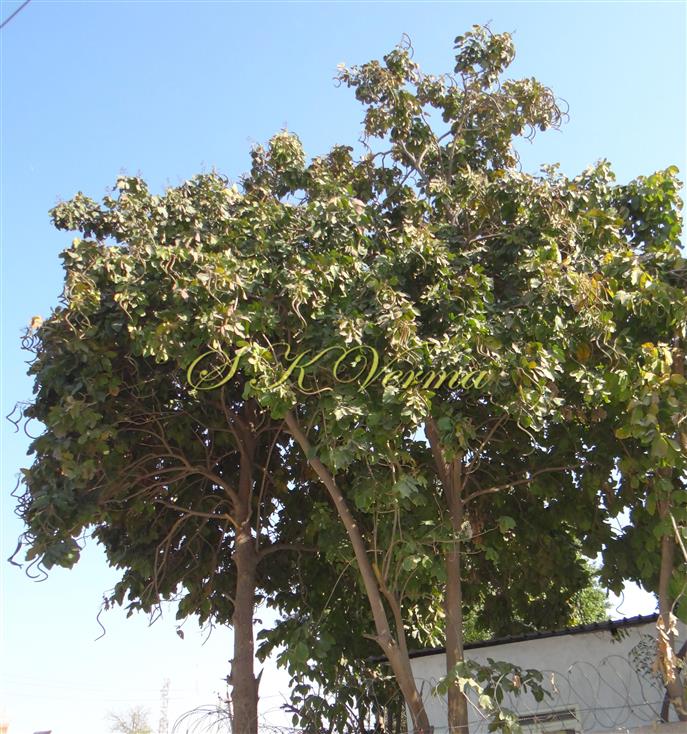
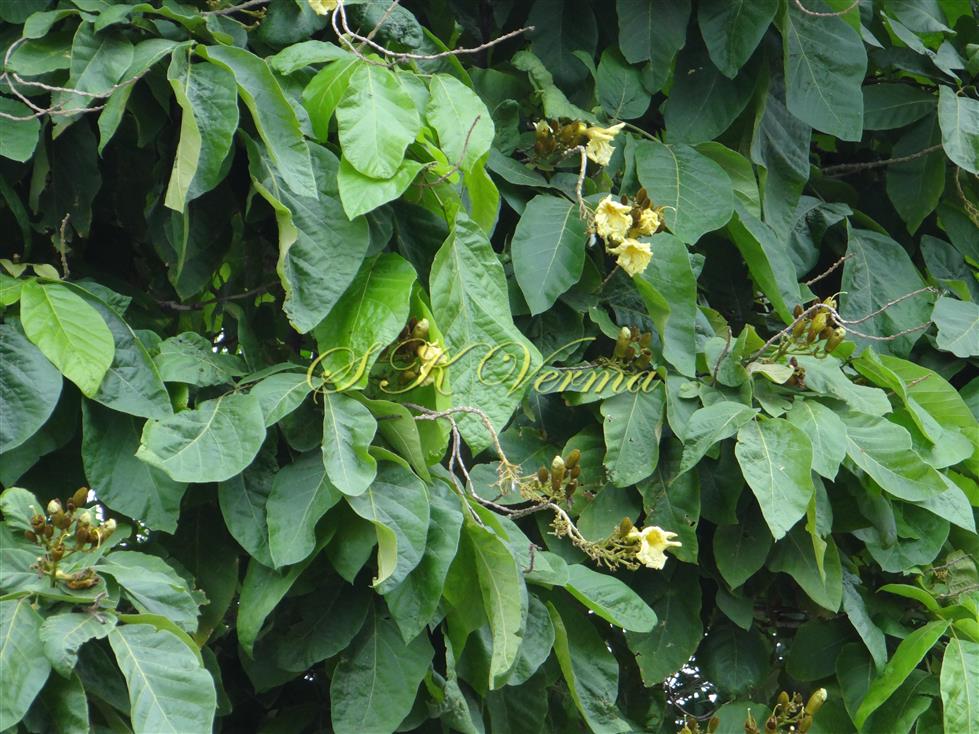
.jpg)
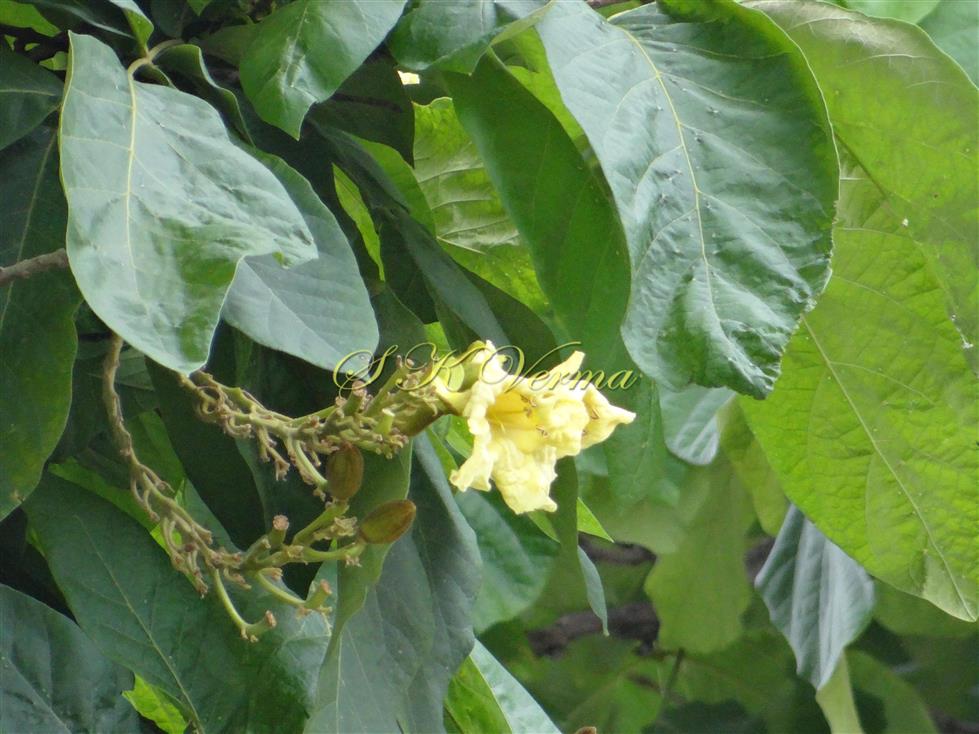
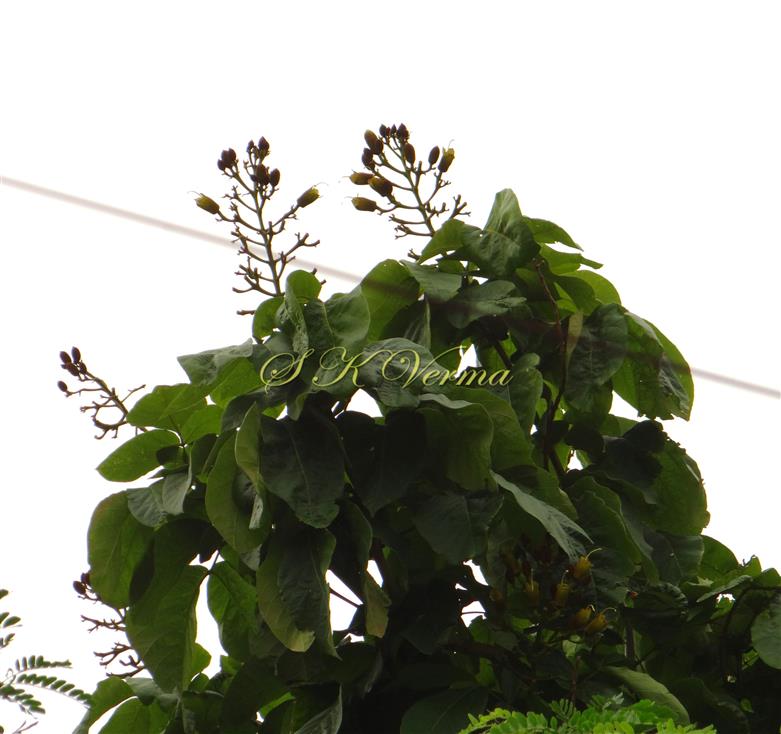
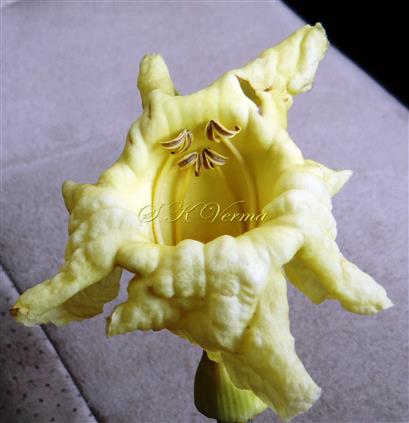
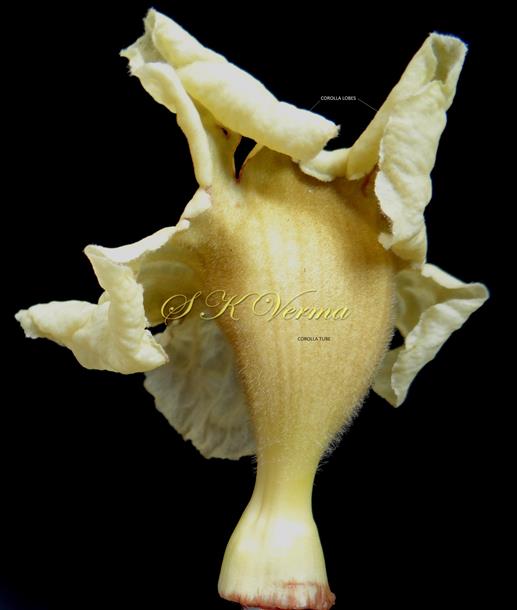
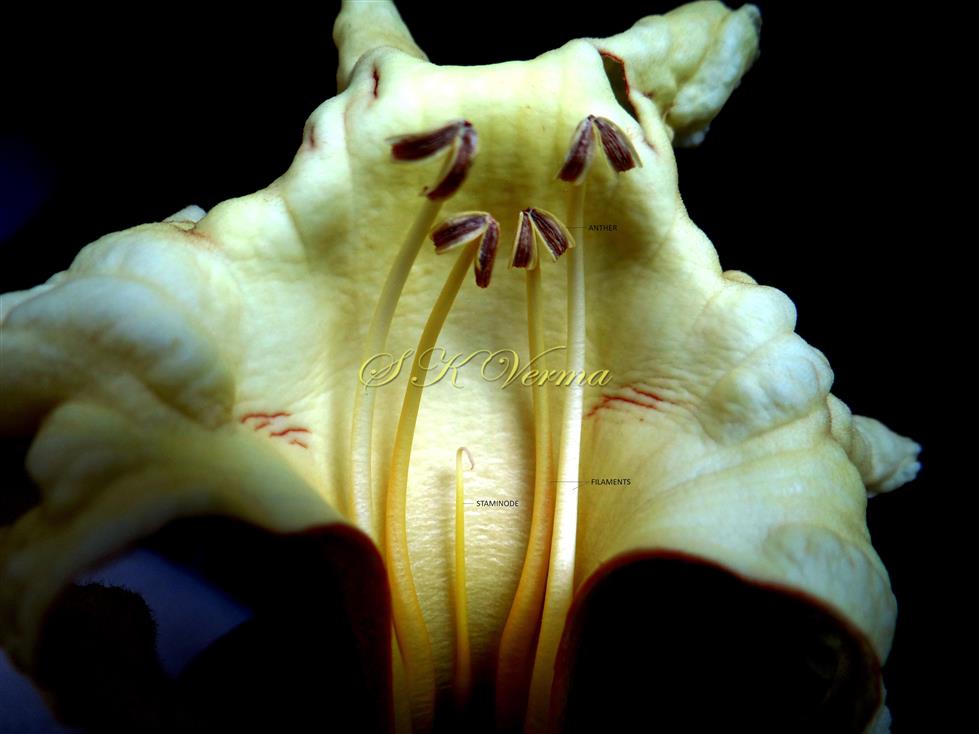

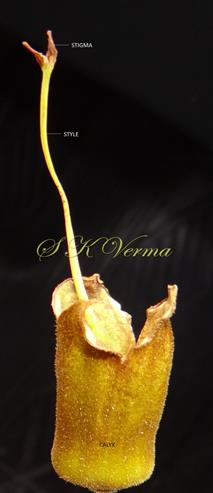
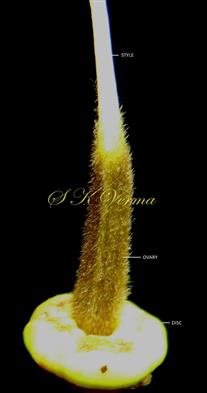
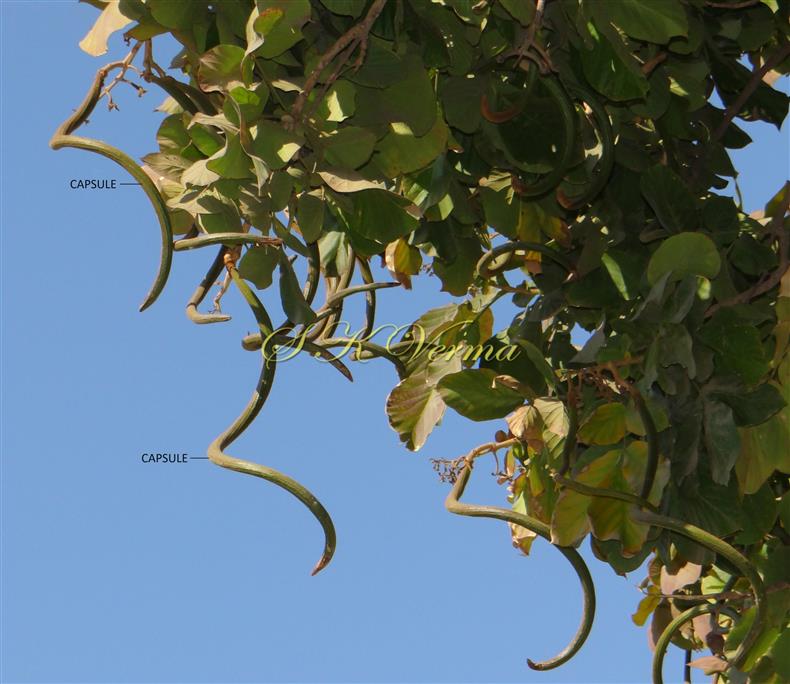
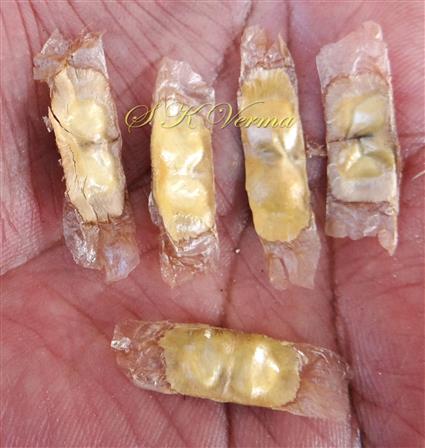



.jpg)









